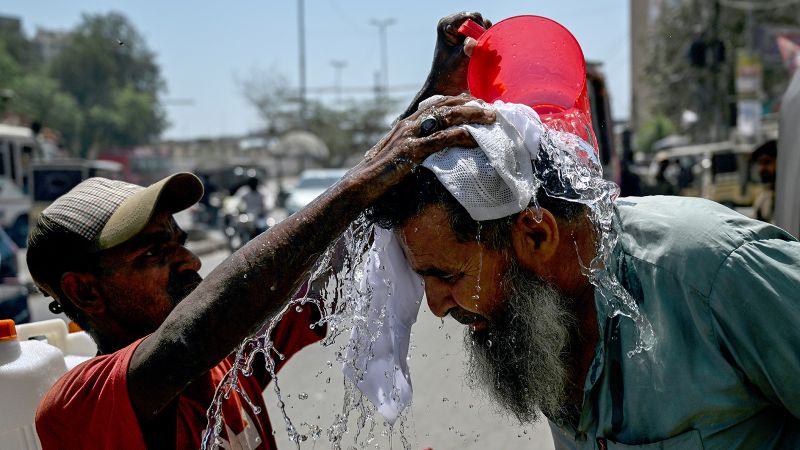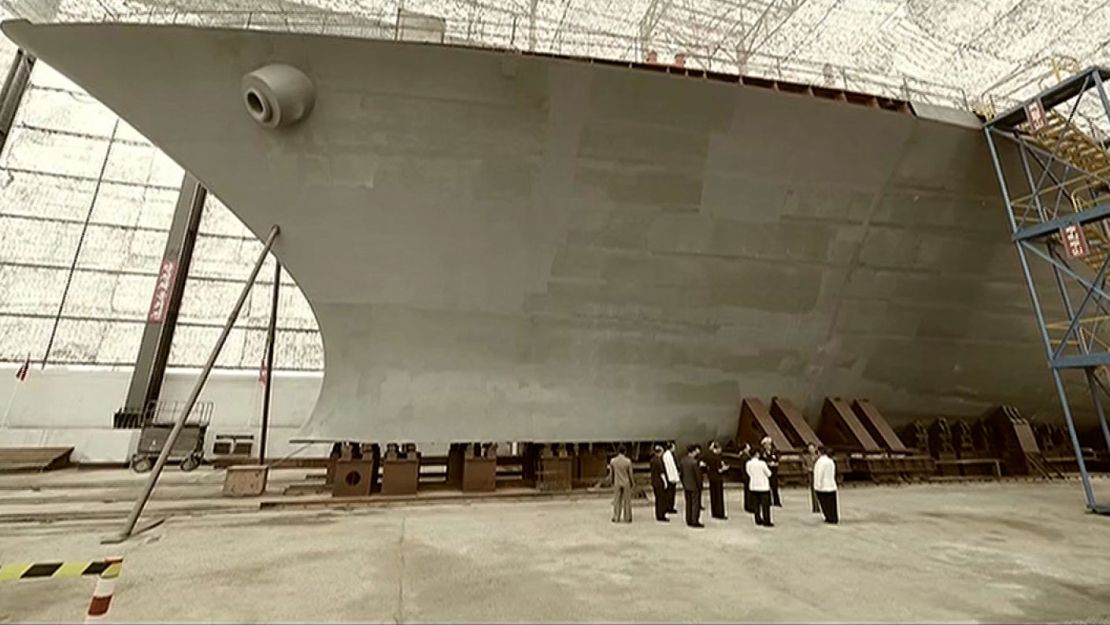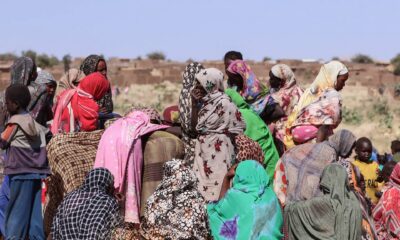Islamabad and New Delhi
CNN
—
For hundreds of millions of people living in India and Pakistan the early arrival of summer heatwaves has become a terrifying reality that’s testing survivability limits and putting enormous strain on energy supplies, vital crops and livelihoods.
Both countries experience heatwaves during the summer months of May and June, but this year’s heatwave season has arrived sooner than usual and is predicted to last longer too.
Temperatures are expected to climb to dangerous levels in both countries this week.
Parts of Pakistan are likely to experience heat up to 8 degrees Celsius above normal between April 14-18, according to the country’s meteorological department. Maximum temperatures in Balochistan, in country’s southwest, could reach up to 49 degrees Celsius (120 Fahrenheit).
That’s like living in Death Valley – the hottest and driest place in North America – where summer daytime temperatures often climb to similar levels.


Ayoub Khosa, who lives in Balochistan’s Dera Murad Jamali city, said the heatwave had arrived with an “intensity that caught many off guard,” creating severe challenges for its residents.
“One of the major issues is the persistent power outages,” said Khosa, who told CNN they could last for up to 16 hours a day.
“This has intensified the impact of the heat, making it harder for people to cope,” he said.
Neighboring India has also been experiencing extreme heat that arrived earlier than usual and its metrological department warned people in parts of the country to brace for an “above-normal number of heatwave days” in April.
Maximum temperatures in capital Delhi, a city of more than 16 million, have already crossed 40 degrees Celsius (104 Fahrenheit) at least three times this month – up to 5 degrees above the seasonal average – the meteorological department said.
The searing heat is being faced in several neighboring states too, including Rajasthan in the northwest, where laborers and farmers are struggling to cope and reports of illness are beginning to emerge.
Maximum recorded temperatures in parts of Rajasthan reached 44 degrees Celsius (111 Fahrenheit) on Monday, according to the meteorological department.
Anita Soni, from the women’s group Thar Mahila Sansthan, said the heat is much worse than other years and she is worried about how it will impact children and women in the state.
When the laborers or farmers head out, there is an instant lack of drinking water, people often feel like vomiting, they fall sick, or they feel dizzy, she said.
Farmer Balu Lal said people are already falling sick due to working in it. “We cannot even stand to work in it,” he said. “When I am out, I feel that people would burn due to the heat outside.”
Lal said he worries about his work and how he will earn money for his family. “We have nowhere else to go,” he said.
Experts say the rising temperatures are testing human limits.
Extreme heat has killed tens of thousands of people in India and Pakistan in recent decades and climate experts have warned that by 2050 India will be among the first places where temperatures will cross survivability limits.
Under heatwave conditions, pregnant women and their unborn children are particularly at risk. “There is unexplained pregnancy loss and early babies,” said Neha Mankani, an advisor at the International Confederation of Midwives in Karachi.
“In the summers, 80% of babies are born preterm with respiratory issues because of the weather. We also see an increase in pregnancy induced hypertension, (which could) lead to preeclampsia – the leading cause of maternal mortality.”
India and Pakistan, both countries with glaring disparities in development, are expected to be among the nations worst affected by the climate crisis – with more than 1 billion people predicted to be impacted on the subcontinent.

The cascading effects will be devastating. Likely consequences range from a lack of food and drought to flash floods from melting ice caps, according to Mehrunissa Malik, a climate change and sustainability expert from Pakistan’s capital Islamabad.
Communities without access to cooling measures, adequate housing and those who rely on the elements for their livelihoods will feel the effects much more acutely, said Malik.
“For farmers, the weather is erratic and difficult to predict,” she said. “The main challenge is the fact that temperatures (are) rising at a time when crops aren’t at the stage to be harvested. They start getting ready earlier, yields get lower, and in this dry heat they need more water… If your plants are still young, severe heat causes little chance of them making it.”
Tofiq Pasha, a farmer and environmental activist from Karachi, said summers begin much earlier now.
His home province, Sindh, which, along with Balochistan, has recorded some of the hottest global temperatures in recent years, suffered a major drought during the winter months and the little rainfall has led to water shortages, he said.
“This is going to be a major livelihood issue among farmers,” Pasha said, explaining how temperatures also affect the arrival of pests. “Flowers don’t set, they fall, fruits don’t set, they fall, you have pest attacks, they decimate the crop, sometimes it gets too hot… the cycles are messed. Food production is extremely affected.”
Heatwaves have in the past have increased demand for electricity, leading to coal shortages while leaving millions without power. Trains have been cancelled to conserve energy, and schools have been forced shut, impacting learning.

























